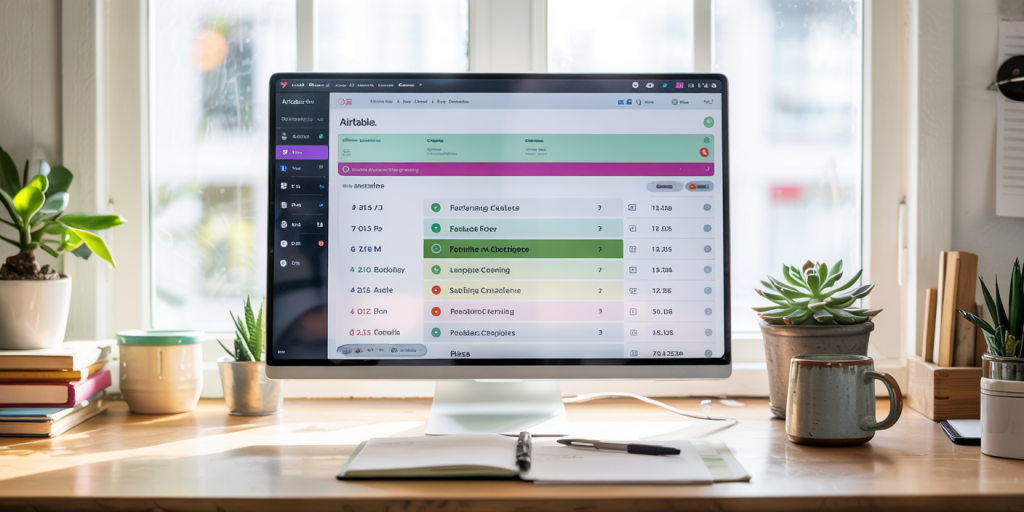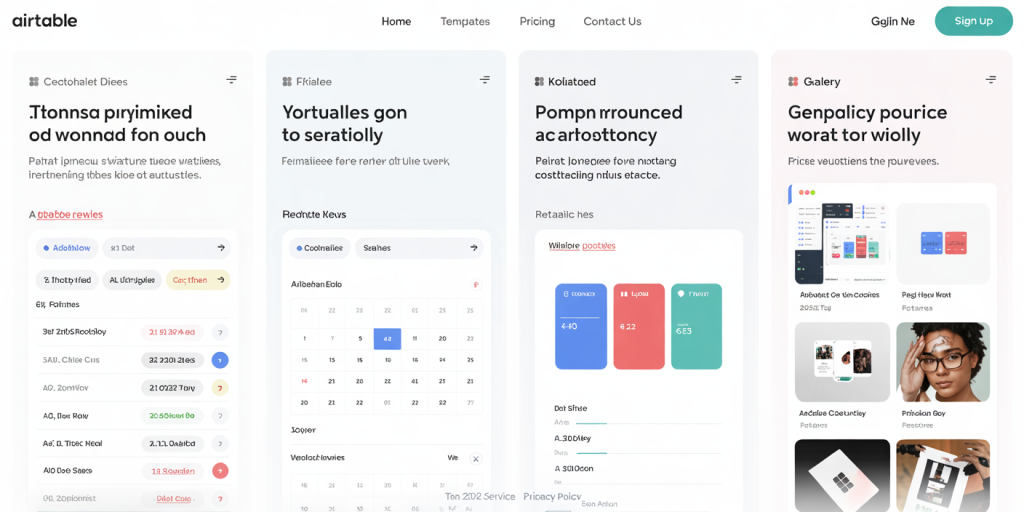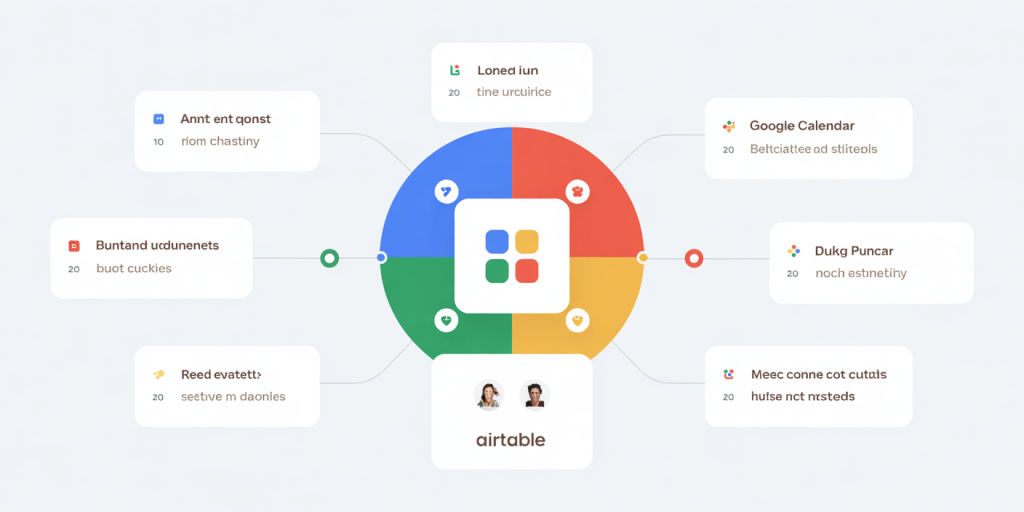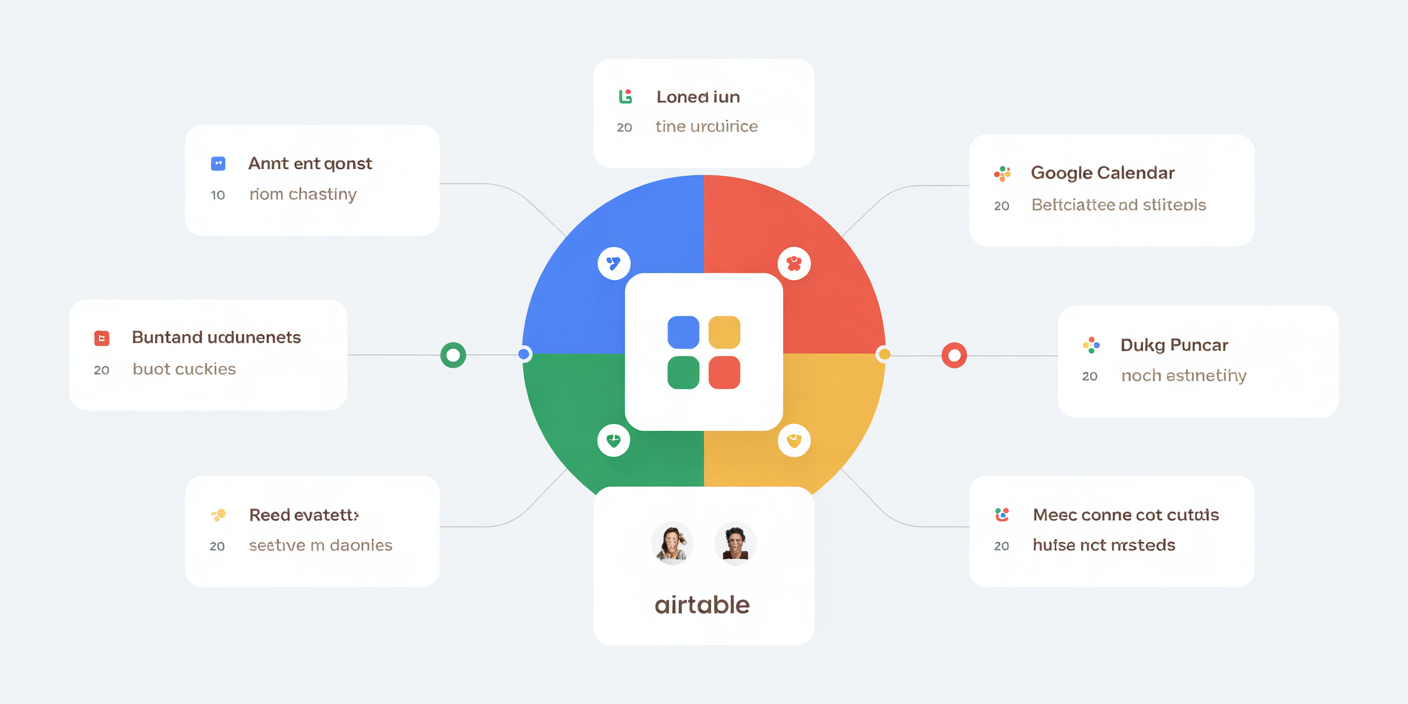How to Use Airtable for Goal Tracking and Personal Projects
In today’s fast-paced world, managing personal goals and projects efficiently has become crucial for productivity and self-improvement. Many tools promise ease and flexibility, yet few combine robust features with user-friendly interfaces as well as Airtable. Recognized as a powerful hybrid between a spreadsheet and a database, Airtable empowers individuals to track goals and organize personal projects innovatively and effectively. This article explores the practical applications of Airtable, detailing strategies and real-world examples to help you maximize its potential in your personal life.
The Growing Need for Structured Goal Tracking
Goal tracking is a fundamental aspect of achieving long-term success, whether related to career, health, education, or creative endeavors. According to a 2019 study by Dominican University of California, people who write down their goals are 42% more likely to achieve them, yet only 3% take this crucial initial step. Traditional methods, such as paper journals or generic spreadsheets, often lack the customization and visualization capabilities that enhance motivation and clarity.
Airtable provides a modern solution by enabling users to create customizable databases tailored to their specific needs. By combining ease of use and powerful automation, Airtable supports dynamic goal tracking, making it easier to update progress, visualize outcomes, and stay accountable. Its flexibility suits diverse projects, from daily habit tracking to long-term creative ventures, offering a centralized platform to keep everything organized.
Setting Up Airtable for Goal Tracking
Starting with Airtable involves creating a base—a workspace that can contain multiple tables tailored to different types or aspects of your goals. For example, a personal fitness goal tracker could include tables for workouts, nutrition logs, milestones, and progress photos. Each table can hold different fields, such as dates, attachments, single-select options, checkboxes, and more, allowing users to input data that is most relevant.

Consider a user aiming to learn a new language. Their Airtable base might include a table for vocabulary goals, categorized by difficulty; a table for daily practice tasks; and another for tracking speaking and listening exercises with notes. The flexibility to link records across these tables not only tracks progress but also reveals dependencies and performance trends. This interconnectivity is one of Airtable’s most valuable features for goal management, helping users to see their journey holistically.
Moreover, Airtable’s automation capabilities enable users to set reminders or automated updates. For example, if a task’s due date arrives, the system can send an automatic email notification or Slack message to prompt action. This helps maintain momentum and prevents goals from slipping through the cracks.
Leveraging Airtable Views and Templates for Personal Projects
One of Airtable’s strongest points is its customizable views. Users can switch seamlessly between grid view (similar to spreadsheets), calendar view, kanban (task board), gallery, and form view. For goal tracking and project management, these views transform how information is consumed and acted upon.

Say you are managing a home renovation project as a personal endeavor. Using the calendar view allows you to visualize deadlines, appointment schedules, and milestone achievements over time. Meanwhile, a kanban board can be set up to track tasks through different stages — planning, in progress, and completed — providing clear visual feedback. If you’re a photographer curating portfolios or personal art projects, the gallery view can display work in a visually compelling way.
Additionally, Airtable offers numerous pre-designed templates specifically crafted for goal tracking and personal projects. For instance, the “Personal Goals Tracker” template helps track yearly goals segmented by category (e.g., health, finance, learning), offering a ready-to-use structure for setting priorities and tracking progress. Meanwhile, project management templates like “Creative Project Tracker” enable assignment and deadline tracking and collaboration, useful even for individuals coordinating multiple facets of a project.
| View Type | Best Used For | Example Use Case |
|---|---|---|
| Grid View | Detailed data entry & editing | Task lists, data logs, research notes |
| Calendar View | Scheduling & timeline tracking | Milestones, deadlines, appointments |
| Kanban View | Workflow management | Task progression, habit streaks |
| Gallery View | Visual content display | Portfolio showcase, event photos |
| Form View | Data collection & feedback | Self-assessments, habit input |
Choosing and alternating between these views according to your needs can make managing your personal projects more engaging and less overwhelming.
Using Airtable Automations and Integrations for Better Efficiency
Efficiency is crucial in personal productivity systems, and Airtable’s automation capabilities can dramatically reduce manual work. Automations can trigger actions based on events such as adding a record, updating a field, or reaching a due date. For example, when adding a new project task, a user might automate Slack notifications to a personal channel to keep motivations high and ensure reminders are consistent.
Moreover, Airtable integrates smoothly with many popular apps used for productivity and communication, including Google Calendar, Trello, Slack, and Zapier. Such integrations allow users to sync projects and goals across platforms, avoiding duplicated efforts and fragmented workflows.

An actual case comes from freelance writer Sarah Jenkins, who uses Airtable to manage her editorial calendar. By integrating Airtable with Google Calendar, she keeps track of submission deadlines and client meetings in one dashboard, cutting down missed deadlines by 37%, according to her own records.
The integration possibilities also extend to habit tracking apps and fitness devices—for instance, syncing workout details automatically from fitness trackers to Airtable can offer deeper insight into health habits without manual data entry.
Practical Examples of Personal Projects Managed with Airtable
Numerous users have successfully adapted Airtable for diverse projects, demonstrating its versatility and adaptability.
1. Fitness Goals Tracking: John Miller, a software engineer, created a base with tables to log daily workouts, calorie intake, and progress photos. He uses formula fields to calculate weekly performance averages and views to monitor trends. His system includes habit streak tracking and motivational quotes sent as automated daily reminders. This structured approach helped him increase gym attendance by 50% within six months.
2. Writing and Publishing Projects: Amy Lin, an aspiring author, organizes her book chapters, research notes, and revision deadlines in Airtable. She employs the kanban view to track draft stages and the calendar view for submission dates. Automated integration with email ensures editors receive updates when chapters move to review status—streamlining a process that used to rely on spreadsheets and email threads.
3. Financial Budgeting and Goal Pursuit: Many personal finances are managed through static spreadsheets or apps with limited customization. Airtable can combine budgeting with goal tracking, such as saving for a trip or paying off debt, linking transaction records with goal milestones. As an example, an Airtable base might calculate the amount saved monthly and project when specific targets will be met, keeping motivation high to stick to budgeting plans.
The adaptability of Airtable spans beyond standard project types—users in photography, event planning, education, and more have tailored it successfully for nuanced personal workflows.
Future Perspectives: Airtable in Personal Productivity
As digital productivity tools continue evolving, Airtable is well-poised to maintain its relevance and expand functionality. Emerging trends such as artificial intelligence integration, enhanced automation, and mobile-first optimization suggest that Airtable’s usability for personal goal tracking and project management will only grow stronger.
The platform is actively developing AI features that can automate data categorization, generate insights from entered data, and even suggest goal adjustments based on progress patterns. This could revolutionize how individuals receive feedback and adapt their strategies dynamically, transitioning from passive tracking to an active, guided productivity partner.
Further expansion of collaboration features also benefits personal projects that involve family, friends, or mentors. Enhanced real-time collaboration tools and shared views mean that complex projects or group goals can be coordinated efficiently without shifting to separate platforms.
In addition, based on Gartner’s predictions for workspace app adoption, there is expected growth in demand for integrated platforms such as Airtable that combine data management, collaboration, and automation. As individuals become more accustomed to managing numerous goals and side projects simultaneously, tools that allow seamless control and visualization—two strengths of Airtable—will be increasingly vital.
By harnessing Airtable’s customizable bases, flexible views, automation capabilities, and integrations, users can transform the way they approach personal goals and projects. Whether managing a multi-layered health routine, creative writing process, or financial savings, Airtable offers powerful yet accessible tools to stay organized, motivated, and on track. Its continuous evolution signals a promising future in personal productivity management, catering to the growing need for smarter, more adaptable tools in the digital age.
